The Urban Condition
In “The Urban Condition” (May 19th – Jun 5th, 2011) three artists explore the contradictions and paradoxes of living in a city constantly transforming because of technology, struggling with issues of class and exploitation and yet continuing to hope for something better, as the folklore they grew up on had promised.
Amber Hammad’s work explores how the virtual world, conjured for us by means of modern technology compares to the gritty reality that is also a product of the destructive potential of technology – both experiences invariably inform the ‘hybrids’ we have become. Saba Khan reflects on the irony of a craftperson’s predicament who helps manufacture commodities that s/he will never use her/himself. In the wake of this criticality, Sana Arjumand invokes belief in divine help that she grew up on, of “noor” and “farishtey” who are said to come to one’s assistance in times of crisis.
(click on each image to enlarge)
Sana Arjumand. In the Playground: Nurture 2010. Acrylic and oil on canvas. 3ft by 4 ft.
Sana Arjumand. In the Playground: Dialogue (2011). Acrylic and oil on canvas. 4 ft by 3 ft. red dot
Sana Arjumand. In the Playground: Voyage (2011). Acrylic and oil on canvas. 4 ft by 4 ft.
 Saba Khan. Big City (2010). Rhinestones, sequins, thread on velvet. 38″ by 53″.
Saba Khan. Big City (2010). Rhinestones, sequins, thread on velvet. 38″ by 53″.
Saba Khan. More Prosperity (2010). Thread and buttons on fabric. 60″ by 58″.
Saba Khan. The Party Generator (2010). Sequins, plastic flowers, applique, thread on fabric. 60″ by 58″. red dot
Amber Hammad. Half-life News. Digital print on canvas (ed 1 of 3)
Amber Hammad. Modern warfare. Digital print on canvas (ed 1 of 3)
Amber Hammad. Teken-me. Digital print on canvas (ed 2 of 3)
What’s Hot? (April 3rd – 17th, 2011)
“What’s hot?” or should we ask, What’s hot now? Since Andy Warhol popular culture has been equated with an ordinariness that is antithetical to bourgeois taste. Whereas Warhol’s soup can symbolized “common” experience, Warhol himself claimed to partake of it. In contrast, when local tropes of popular culture such as the truck art aesthetic, the mazar and the dhaba, are used, they have most often been external to the artists’ own realm of lived experience. In the use of popular culture as muse then, a subliminal assertion of class affiliation is at play. “What’s hot?” asked artists whose work reflected an interest in “the popular” (in terms of subject matter and/or materiality) to investigate, through their own particular subject positions, locales where contemporary popular trends perforate class boundaries. The artists found these sites to be lawn prints, lace, Mills & Boon romances, the Urdu digest, cooking shows, Faiz Ahmed Faiz, green tea, Coke, and inescapably, religion.
Participating artists are: Sehba Maruf, Danish Ahmed, Sophia Mairaj, Malika Abbas, Sumaiya Jilani, Muhammad Ali.
(click on each image for a larger view)
Danish Ahmed. Coke Mehrab (diptych). 2011. Silk screen and acrylic on canvas. 18in x 18in each
Danish Ahmed. Coke Jaali (diptych). 2011. Silk screen and acrylic on canvas. 18in x 18in each red dot
Danish Ahmed. Coke Gumbad (diptych). 2011. Silk screen and acrylic on canvas. 18in x 18in each
Sophia Mairaj. Khatoon ka Dastarkwhan. 2011. Digest cuttings on paper. 44in x 36in.
Sophia Mairaj. Cover Girl. 2011. Oil on canvas. 30in x 40in. red dot
 Muhammad Ali. Green Tea without Sugar. 2011. Mixed media. Approx 23.5in x 49in
Muhammad Ali. Green Tea without Sugar. 2011. Mixed media. Approx 23.5in x 49in
Muhammad Ali. Green Tea Without Sugar. Details.
Muhammad Ali. zubeida@live.com. 2011. Needlework on fabric. 27.5in x 30.5in.
Muhammad Ali. Table for Two. 2011. Mixed media. Dimensions variable. red dot
Sehba Maruf. Three in a Box. 2011. Collage. 6in x 19in.
Sehba Maruf. Circus of Madness. 2011. Collage. 32in x 26in.
Malika Abbas. Treasure Box. 2011. Mixed media on watercolor paper. Approx 29in x 16in.
Malika Abbas. Bandwagon Series 2. 2011. Mixed media on watercolor paper. Approx 7.5in x 7in.
Malika Abbas. Bandwagon Series 3. 2011. Mixed media on watercolor paper. Approx 7.5in x 7in.
Malika Abbas. Bandwagon Series 4. 2011. Mixed media on watercolor paper. Approx 7.5in x 7in.
Malika Abbas. Bandwagon Series 5. 2011. Mixed media on watercolor paper. Approx 7.5in x 7.25in.
Malika Abbas. Bandwagon Series 6. 2011. Mixed media on watercolor paper. 7.5in x 7in.

 Malika Abbas. Bandwagon Series 1. 2011. Mixed media on watercolor paper. Approx 7.5in x 5in.
Malika Abbas. Bandwagon Series 1. 2011. Mixed media on watercolor paper. Approx 7.5in x 5in.
Sumaiya Jillani. T-shirt (front and back). 2011. Screen print on cotton t-shirt. Edition 1 of 6.
The Inquiry of Art – a solo by Hasnat Mehmood
About “The Inquiry of Art” (Feb 27th – Mar 13th, 2011), Hasnat Mehmood writes:
“The body of work produced for this show is an investigation of the very basics of Pakistani art in the present times. For this purpose I asked my colleagues to provide me with names of people (writers, visual artists, poets, directors, musicians or anybody else) who have/had inspired his/her work or represent his/her philosophy. I then inscribed these names on to miniature books and placed them on a shelf, resulting in a “portrait” of the artist, critic, or curator.
I think that art has never been an individual’s effort only; it has always been produced according to the times in which the artist lives. These portraits articulate this phenomenon because viewers will find a cross listing of writers, etc. from one portrait to the next, indicating a specificity of time and place.
This project is also an historical chronicle because viewers can actually go through the names of influential people in a portrait and look up those writings of an author or works of an artist to clearly see how the influences of other people construct the portrait’s artist or critic.
I believe when we see something it becomes part of us and it can either influence us on an unconscious level, or we sometimes knowingly construct something in response to that. I like it when we opt for the latter and are consciously aware of the influence, give due credit to the person from whom we got the idea. This is a way to initiate dialogue, which is a healthy phenomenon.
Art is dead; long live Art!”
(click on each image for a larger view)
Portraits: The Inquiry of Art (Wall I). Letraset, vinyl letters on handmade books. Dimensions Variable.
Portraits: The Inquiry of Art (Wall II). Letraset, vinyl letters on handmade books. Dimensions Variable.
Portraits: The Inquiry of Art – Risham Syed. Letraset, vinyl letters on handmade books.
Portraits: The Inquiry of Art – Naiza Khan. Letraset, vinyl letters on handmade books.
Portraits: The Inquiry of Art – Anwar Saeed. Letraset, vinyl letters on handmade books.
Portraits: The Inquiry of Art – Ahsan Jamal. Letraset, vinyl letters on handmade books.
Portraits: The Inquiry of Art – Ayesha Jatoi. Letraset, vinyl letters on handmade books.
Portraits: The Inquiry of Art – Ayaz Jokhio. Letraset, vinyl letters on handmade books.
Portraits: The Inquiry of Art – Atteqa Ali. Letraset, vinyl letters on handmade books.
Portraits: The Inquiry of Art – Quddus Mirza. Letraset, vinyl letters on handmade books.
Portraits: The Inquiry of Art – Imran Channa. Letraset, vinyl letters on handmade books.
Portraits: The Inquiry of Art -Umer Butt. Letraset, vinyl letters on the pillar.
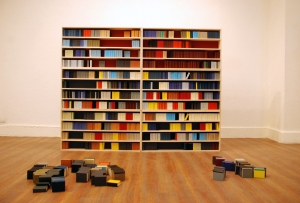 Portrait-Do it Yourself. 886 handmade books in wooden shelves. 6 shelves of dimensions 36in x 18in x 4in each.
Portrait-Do it Yourself. 886 handmade books in wooden shelves. 6 shelves of dimensions 36in x 18in x 4in each.
Portrait-Do it Yourself (detail).
Portrait-Do it Yourself (detail 2).
Hasnat Mehmood. Note book series. Bank note collages on hand made books. Variable.
Note book series (details: book 3).
Note book series (detail Book 21).
Note book series (detail Book 33).
Inflation Design (triptych). Bank note collage on vasli. 40 x 30inch each.
Flirting with Bank Notes I. Bank note collages on illustration board. 33.5in x 41.5in.
Flirting with Bank Notes I (details).
 Flirting with Bank Notes II. Bank note collages on illustration board. 33.5in x 41.5in.
Flirting with Bank Notes II. Bank note collages on illustration board. 33.5in x 41.5in.
Flirting with Bank Notes II (details)
“Calling All Heroes” (Feb 4th – 20th, 2011)
“Calling All Heroes” is Danish Raza’s second solo exhibition. About this body of work, he writes: We live in a society of reluctant heroes. Heroes with the power of a million exploding suns sit idly, unable to recongize their true potential, waiting for a true hero to save the day. In truth, we don’t need super powers to make a change. It takes only willingness. Here is a call to all reluctant heroes, come out, come out, wherever you are!”
(click on each image for a larger view)
Danish Raza. Picture of a Self. 2011. Acrylic on canvas. 24in x 30in. red dot
Danish Raza. The Reluctant Hero. 2011. Pen and digital print on paper. 11in x 8.5in.
Danish Raza. Follow the Twitters. 2011. Pen and digital print on paper. 11in x 8.5in. red dot
Danish Raza. Coming Home. 2011. Pen and digital print on paper. 11in x 8.5in. red dot
Dansh Raza. Triumph of Evil. 2011. Pen and digital print on paper. 11in x 8.5in. red dot
Danish Raza. The Man with 100 Wings. 2011. Pen and digital print on paper. 11in x 8.5in.
Danish Raza. Super Sacrificial Goat. 2011. Pen and digital print on paper. 11in x 8.5in.
Danish Raza. Alter Ego. 2011. Pen and digital print on paper. 11in x 8.5in. red dot
Danish Raza. Empathy. 2010. Acrylics on canvas. 4ft x 3ft.
Danish Raza. Apathy. 2011. Acrylic on canvas. 4ft x 3ft.
Prying
The camera is a device often critiqued for prying. “Prying” (January 15th – 26th, 2011) presents the works of three artists where each of the results of the prying lens leads the viewer through a different kind of vicarious experience.
Umer Adil’s documentary photographs from the rural areas of Pakistan capture a defiant affront to the prying of the lens. Lali’s photographs make the viewer conscious, and perhaps even a little guilty, of prying into her “autobiographical” sequences. Najia Omer’s mixed media canvases pry into her current predicament, which is fraught with having to make adjustments with changing circumstances.
Mehreen Khalid, better known as Lali, got her B.F.A. in printmaking from N.C.A. in 2003 and an M.F.A. in Photography from Pratt Institute (2009) where she was a Fulbright Scholar. She has participated in several exhibitions in New York, Lahore and Islamabad. “Prying” is her first show in Karachi. She is currently an Associate Professor at the National College of Arts, Lahore.
Najia Omer received her B.F.A. from the Indus Valley School of Art and Architecture in 2008.
Umer Adil graduated from the Indus Valley School of Art and Architecture with a B.F.A. in Communication Design in 2002. He is primarily a documentary film maker and also exhibits his photographic work.
(click on each image for larger view)
Umer Adil. Intrusions 1 (2009). Digital print on Kodak lustre photo paper. 12″ x 18″.
Umer Adil. Intrusions 2. (2007) Edition 1 of 5. Digital print on Kodak lustre photo paper.18″ x 12″.
Umer Adil. Intrustions 3 (2008). Edition 1 of 5. Digital print on Kodak lustre photo paper. 18″ x 12″.
Umer Adil. Intrusions 4 (2007). Edition 1 of 5. Digital print on 180gm coated matte paper. 30″ x12″. red dot
Umer Adil. Intrusions 5 (2009). Edition 1 of 5. Digital print on 180gm coated matte paper. 30″ x 12″.
Umer Adil. Intrusions 6 (2010). Edition 1 of 5. Digital print on Kodak lustre photo paper. 18″ x 12″.
Umer Adil. Intrusions 7 (2010). Edition 1 of 5. Digital print on Kodak lustre photo paper. 18″ x 12″.
Umer Adil. Intrusions 8 (2000). Edition 1 of 5. Black and white photograph on Kodak Lustre photo paper.12″ x 18″.
Lali Khalid. Taimur and I, Canoneer Court Brooklyn (2009). Edition 1 of 5. Digital C Print. 30″ x 20″. red dot
Lali Khalid. Saroos, Gulberg III, Lahore (2009). Edition 1 of 5. Archival inkjet print. 24″ x 24″.
Lali Khalid. Taimur and I, Breakfast Table II, 707 Sylvan Rd. Michigan (2010). Edition 1 of 5. Digital C Print. 30″ x 20″.
Lali. Taimur and I, Breakfast Table I, 707 Sylvan Rd. Michigan (2010). Digital C Print. 30″ x 20″.
Lali. Me, Last Day, 707 Sylvan Rd. Michigan (2010). Digital C Print. 30″ x 20″.
Lali Khalid. 2573 Fair Ave. Ohio (2010). Edition 1 of 5. Archival Inkjet Print. 24″ x 24″.
Lali Khalid. Me, Dining Room, 1318 West Argyle Chicago (2010). Edition 1 of 5. Archival inkjet print. 24″ x 24″.
Lali Khalid. Me, Attic, 2573 Fair Ave. Ohio (2010). Edition 1 of 5. Digital C Print. 24″ x 24″.
Lali Khalid. Me, Cricket Ground, Aitchison College, Lahore (2009). Edition 1 of 5. Archival inkjet print. 24″ x 24″.
Najia Omer. Position 1. Digital print and mixed media on paper. 8″ x12.5″.
Najia Omer. Position 2. Digital print and mixed media on paper. 8″ x12.5″.
Najia Omer. Position 3. Digital print and mixed media on paper. 8″ x12.5″.
Najia Omer. Position 4. Digital print and mixed media on paper. 8″ x12.5″.
Najia Omer. Position 5. Digital print and mixed media on paper. 8″ x12.5″.
Najia Omer. Position 6. Digital print and mixed media on paper. 8″ x12.5″.
Representational is not a Dirty Word (Dec 4th – 19th, 2010)
Ever since the 80’s, in Pakistan Representational Art has had to fight for legitimacy as a genre. It was first denigrated by Zia’s pseudo Islamist policies which favoured calligraphy and abstraction over representational work. In the more recent shift towards the conceptual, “representational” is a term assigned almost pejoratively to work whose primary interest is form, even so when the concerns in some work are not altogether divested of meaning or narrative. This show seeks to “represent” four artists who enjoy working in the representational genre because “representational” is not a dirty word. The artists are Madiha Hyder, Durrab Tariq, Saleem Ansari and Farazeh Syed.
Madiha Hyder. Mad World (A). 2010. Graphite and charcoal powder, pencils, conte, newspaper clippings on canvas. 4ft x 3ft.
Madiha Hyder. Mad World (B) (dyptich). 2010. Graphite and charcoal powder, pencils, conte, newspaper clippings on canvas. 6ft x 4ft. red dot
Madiha Hyder. Mad World (C). 2010. Graphite and charcoal powder, pencils, conte, newspaper clippings on canvas. 3 ft x 4ft. red dot
Madiha Hyder. Mad World (D). 2010. Graphite and charcoal powder, pencils, conte, newspaper clippings on canvas. 4ft x 3ft. red dot
Madiha Hyder. Mad World (E). 2010. Graphite and charcoal powder, pencils, conte, newspaper clippings on canvas. 3ft x 4ft.
Durrab Tariq. Untitled. 2010. Oil on canvas. Diameter: 42inches.
Durrab Tariq. Untitled. 2010. Oil on canvas. Diameter: 17.5inches. red dot
Durrab Tariq. Untitled. 2010. Oil on canvas. Diameter: 26inches.red dot
Durrab Tariq. Untitled. 2010. Oil on canvas. Diameter: 31inches.
Durrab Tariq. Untitled. 2010. Oil on canvas. Diameter: 31 inches.
Durrab Tariq. Untitled. 2010. Oil on canvas. Diameter: 40inches.
Durrab Tariq. Untitled. 2010. Oil on canvas. Diameter: 28.75inches.
Saleem Ansari. Banyan 2. 2010.Wood cut. 11in x 23.5in.
Saleem Ansari. Banyan 5. 2010. Wood cut. 18in x 29.5in.
Saleem Ansari. Banyan 4. 2010. Wood cut. 15in x 29in.
Saleem Ansari. Banyan 1. 2010. Wood cut. 11.5in x 35in.
Saleem Ansari. Banyan 3. 2010. Wood cut. 15in x 25in.
Saleem Ansari. Banyan 6. 2010. Wood cut. 15in x 29.5in.
Farazeh Syed. Saima. 2010. Oil on canvas. 36in x 30in.
Farazeh Syed. Sonia. 2010. Oil on canvas. 30in x 36in.
Farazeh Syed. Noori 3. 2009. Oil on board. 24”x30”.
Farazeh Syed. Noori 4. 2009. Oil on canvas. 24”x30”.
Farazeh Syed. Noori 5. 2009. Oil on canvas. 30”x36”.
Who’s Afraid of Theory?
“Who’s Afraid of Theory? — a critic’s-artists’ collaborative” (Nov. 13th – 28th, 2010) is a project curated to allow for interchange between critics and artists on the role and importance of theoretical approaches to Art making. Unlike most exhibitions which begin with a Call for Artists, this exhibition began with a Call for Writers. The participating critics were asked to work with an artist of their choice who either had an interest in theory or could become interested in it through discussion. The critic and artist were to then agree on a theoretical model which would be the basis of the work produced for the show. The critic was to further facilitate the understanding of the model and its interpretation and help push the resulting work beyond an illustration of the model. In essence each critic was to also take on the mantle of curator for her/his own artist.
The participating critic-artist duos are Aasim Akhtar and Anwar Saeed, Atteqa Ali and Hasnat Mehmood, Nafisa Rizvi and Mahreen Zuberi, and Niilofur Farrukh and Meher Afroz.
The show is accompanied by a full-colour academic catalogue with contributions by each of the participating writers. Poppy Seed is grateful for the support of the Indus TV Network and Tapal Tea in making this publication possible.
“Who’s Afraid of Theory?” marks the completion of Poppy Seed’s first year of contributing a variety of intellectually engaging art exhibitions and public-centered, interdisciplinary programs for promoting Art appreciation among a general audience. As Poppy Seed’s first anniversary show, “Who’s Afraid of Theory?” is true to the gallery’s mission of making a meaningful, academic addition to the thriving art scene in Pakistan. Poppy Seed is the only gallery which opens its doors to enthusiasts on Sundays. (click on each image to enlarge)
Anwar Saeed. The Other Ways of Love I and II. 2010. Acrylics and charcoal on paper. 14in x 18in.
Anwar Saeed. The Other Ways of Love III, IV. 2010. Acrylics and charcoal on paper. 14in x 18in.
Anwar Saeed. The Other Ways of Love V, VI. 2010. Acrylics and charcoal on paper. 14in x 18in.
Anwar Saeed. The Other Ways of Love VII,VIII. 2010. Acrylics and charcoal on paper. 14in x 18in. red dot
Hasnat Mehmood. Back to Basics I. 2010. Ink on Arches. 16in x 21.75in.
Hasnat Mehmood. Back to Basics. 2010. Etching Board. 11in x 14in.
 Hasnat Mehmood. Untitled A, B, C. 2010. Etching Board. 14in x 11in each.
Hasnat Mehmood. Untitled A, B, C. 2010. Etching Board. 14in x 11in each.
Hasnat Mehmood. Book Works Series 1. 2010. Hand made paper, binding cloth, goldleaf, pen, dry transfers, wood, screen print. 37.5in x 5.5in x 5in.
Meher Afroz. Sabz Baagh. 2010. Needle work, applique, embroidery, screen print on fabric. 4ft6in x 7ft6in.
Meher Afroz. Kaala Baagh. 2010. Needle work, applique, embroidery, screen print on fabric. 4ft6in x 7ft6in.
Mahreen Zuberi. Jahan Ara. 2010.
 Mahreen Zuberi. Jahan Ara. Screen Shot 2010-10-21 at 8.52.15 pm.
Mahreen Zuberi. Jahan Ara. Screen Shot 2010-10-21 at 8.52.15 pm.
Mahreen Zuberi. Jahan Ara. Screen Shot 2010-10-21 at 8.39.23 pm.
Querying the Label (Oct. 22nd – Nov. 7th)
Querying the Label: Pakistani Artists responses to the term, Islamic art is a compilation of the responses of eleven artists to an open call which asked them to “explore what it means to you to be an artist whose world/life is informed and/or influenced and/or inspired by Islamic culture/practice/ideology or paradoxically, the complete lack thereof.”
querying the labelBROCHURE (PDF)
(Click on each image to enlarge)
Asif Sharif. Motifs. 2010. Screen print, Sozan Kari. approx 20in x 30in.
Asif Sharif. Untitled. 2010. Screen print, terracotta, fresco painting, natural pigment on wet lime, sozankari. 25.5in x 23.5in.
Fasiha Batool. Untitled page 3. 2008. Ink and thread on handmade paper. 8.5in x 10.5in. red dot
Fasiha Batool. Untitled page 4. 2008. Ink and thread on handmade paper. 8.5in x 10.5in. red dot
Fasiha Batool. Untitled page 5. 2008. Ink and thread on handmade paper. 8.5in x 10.5in. red dot
Riffat Alvi. An Affair with the Earth. 2010. Terracotta. Dimensions Variable.
Raza Zaidi. Untitled. 2010. Acrylics on canvas. 18inx31in.
Raza Zaidi. Untitled. 2010. Acrylics on canvas. 18inx31in. red dot
Raza Zaidi. Untitled. 2010. Acrylics on canvas. 18inx31in. red dot
Marium Agha. Soni Dhharti Allah Rakhay. 2010. Digital Print and needlework on paper.
Marium Agha. Mullah ki Lipgloss. 2010. Digital print, needlework on paper. 81.79cm x 81.11cm. red dot
Shakira Masood. The Knowledge of Allah-Reaching, Receiving, Reflecting. 2010. Oil on canvas. 18in x 24in. each.
Imran Mir. Untitled. 2010. Acrylics on canvas. 106in x 17in.
Framing the Local Context
Framing the Local Context (Sept. 18th – 28th, 2010) comes as a response to many young contemporary artists’ anxiety of needing to be known as global artists on an international platform and this anxiety translating into an appropriation of media-churned images and issues. The impetus behind the project was to give participating artists an alternative to the globalized (read Western) ideation through engagement with the local intellectual spectrum. It was to suggest that perhaps one of way of countering the pervasive “Pakistani Muslim” stereotype is to look inward for positive inspiration.
Along with the emerging and mid-career artists participating in the show, namely, Danish Raza, Syed Faraz Ali, Salman Hassan, and Hajra Haider, the renowned Meher Afroz was requested to come on board as a mentor artist. Since Afroz’s entire artistic practice has been very committedly locally rooted, she was helpful in providing a mediating link between the culture revealed through the texts and the actual process of articulating ideas into images.
From February to May 2010, the artists sat through a series of talks which were designed to help them (and me), find points of entry into the local schema through literature, philosophy and language. The program included Asif Farrukhi who read excerpts from Ismat Chugtai, Noon Meem Rashid and other Urdu writers that described the regional notion of what it is to be an artist. Khurram Shafique keyed in on Iqbal and Waheed Murad to make a case for how art and literature can be non-elitist, public enterprises. Dr.Wahab Suri commented on the dangers of getting sucked into what is perceived as a modernist/progressive worldview through Postmodernist critique. Rizwanullah Khan highlighted the differences between traditional Eastern and post-Enlightenment Western attitudes towards making art. Ajmal Kamal reflected critically on the biases embedded in Urdu semantics that are revealed through the process of translation. Dr. Fatema Hassan shared her poetry and the challenges female writers of Urdu have faced in time.
Over the summer, the artists took their notes and interpretations of the series to their studios and the result is the current exhibition, Framing the Local Context.
(Click on each image for larger view)
 Meher Afroz. Gulistan Humara I. Graphite, acrylic, thread on Reeves. 19.5″ x 11.25″.
Meher Afroz. Gulistan Humara I. Graphite, acrylic, thread on Reeves. 19.5″ x 11.25″.

Meher Afroz. Gulistan Humara II. Graphite, acrylic and thread on Reeves. 7.06″ x 11.4″.
Meher Afroz. Gulistan Humara III. Graphite and acrylics on Reeves. 7.06″ x 11.3″.
Meher Afroz. Gulistan Humara IV. Graphite on Reeves. 15″ x 22.25″.
Meher Afroz. Gulistan Humara V. Graphite and thread on Reeves. 15″ x 22.25″.
Meher Afroz. Gulistan Humara VI. Graphite, acrylics and collage. 15″ x 22.5″. red dot
Meher Afroz. Gulistan Humara VII. Graphite, acrylics and collage. 15.25″ x 22.75″. red dot
Danish Raza. Garden of Kali. Acrylics on canvas. 2.5ft x 2.5ft.
Danish Raza. Mother of Lies. Acrylics on canvas. 2.5ft x 2.5ft.
Danish Raza. Killing Targets. Acrylics on canvas. 2.5ft x 2.5ft.
Danish Raza. Sept 2010. Great Serpent of Sorrow. Acrylics on canvas. 2.5ft x 2.5ft.
Salman Hassan. Untitled I. Digital prints on photo paper. Each print 3.5″ x 5″.
Salman Hassan. Untitled II. Ink and acrylic on black and white photograph. 4″ x 6″. red dot
Salman Hassan. Untitled III. Ink and acrylic on black and white photograph. 4″ x 6″. red dot
Salman Hassan. Untitled IV. Ink and acrylic on black and white photograph. 4″ x 6″. red dot
Salman Hassan. Untitled V. Digital prints on photo paper. Each print 3.5″ x 5″.
Salman Hassan. Untitled VI. Ink on black and white photograph. 4″ x 6″.
Salman Hassan. Untitled VII. Ink on digital print. 3.5″ x 5″.
Salman Hassan. Untitled VIII. Ink on black and white photograph. 4in x 6in.
Salman Hassan. Untitled IX. Digital prints on photo paper. Each print 3.5″ x 5″.
Hajra Haider. Balancing C. Nylon rope. Variable.
Syed Faraz Ali. Icon I. Silk screen and sand paper on canvas. 4ft 7in x 3ft 7.5in. red dot










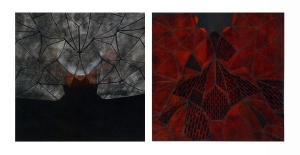






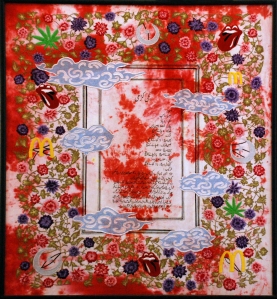








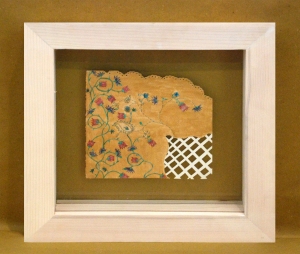



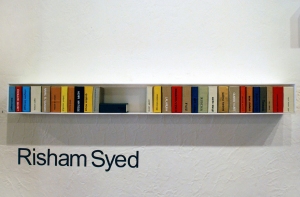


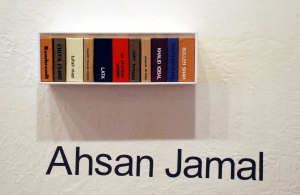

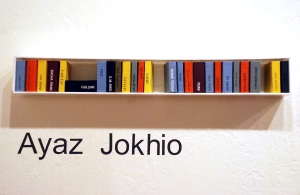
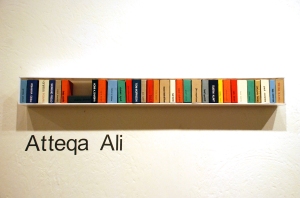




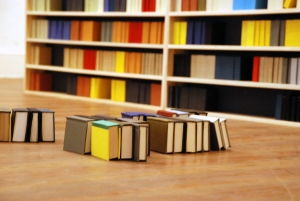

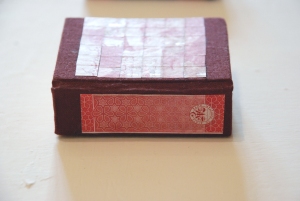
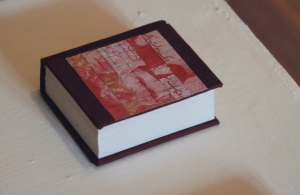


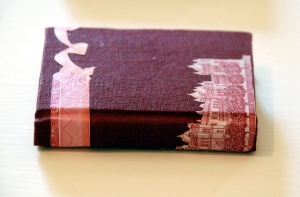

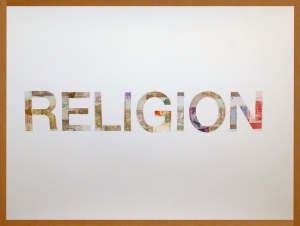







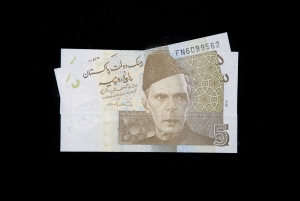


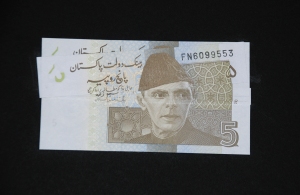
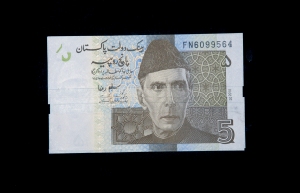

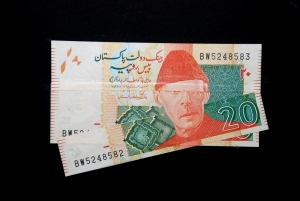
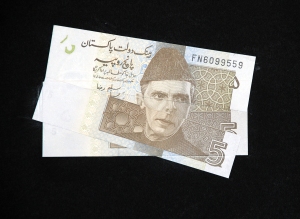



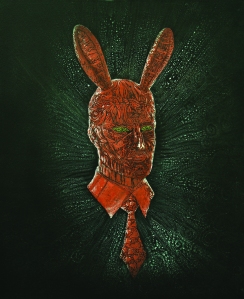




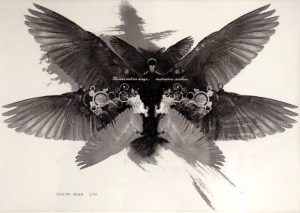

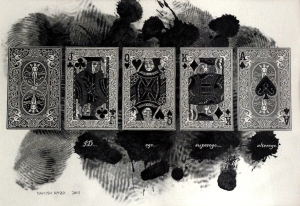

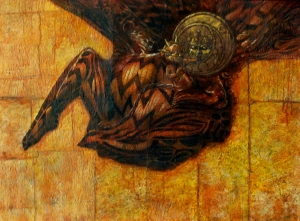



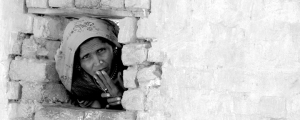
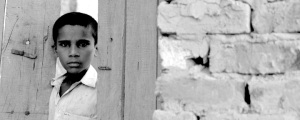

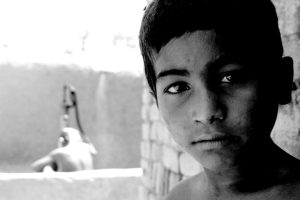
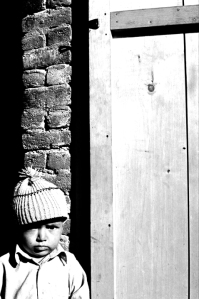

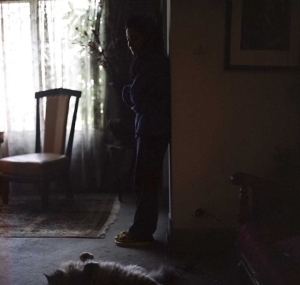




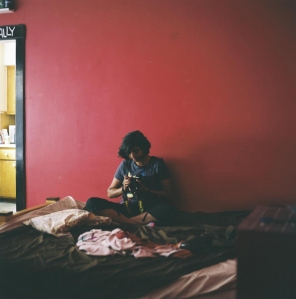




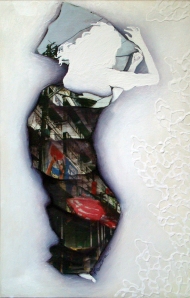




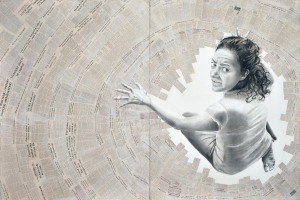


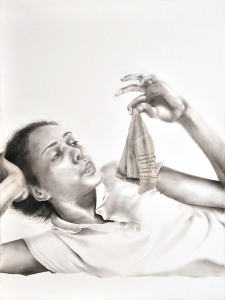


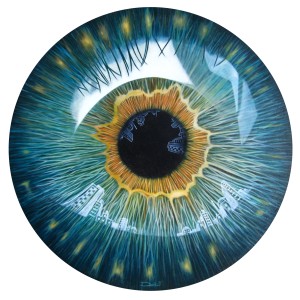

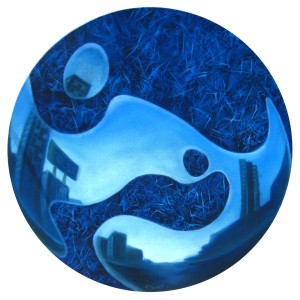


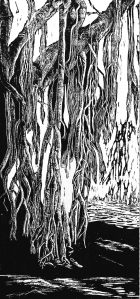
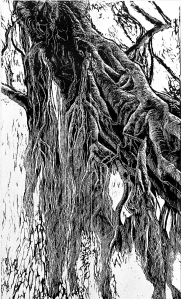
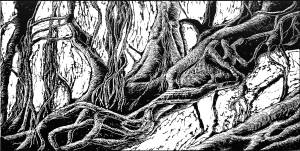

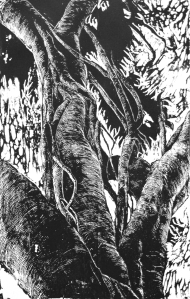

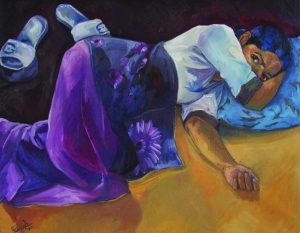





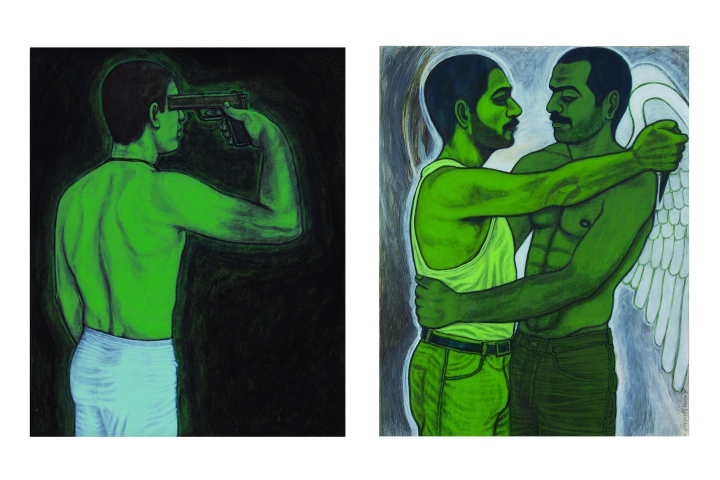
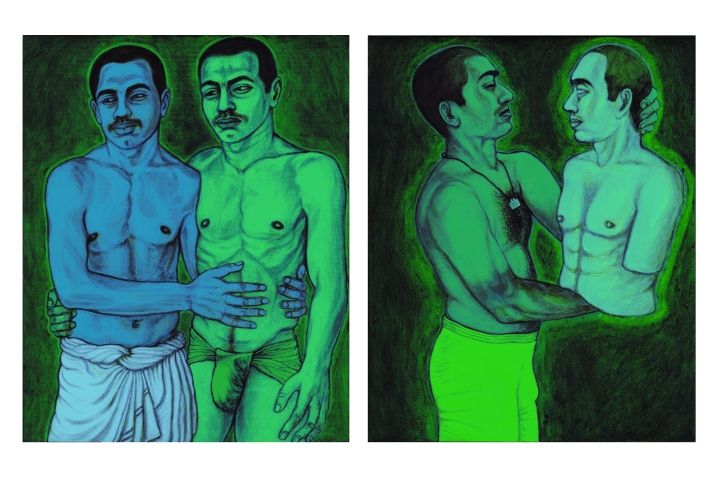


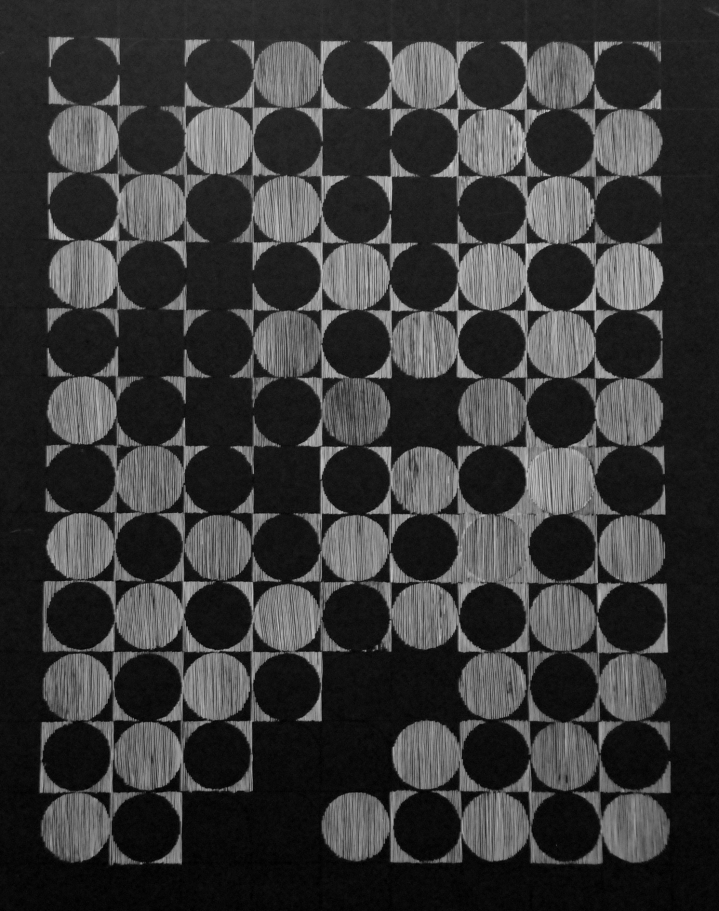
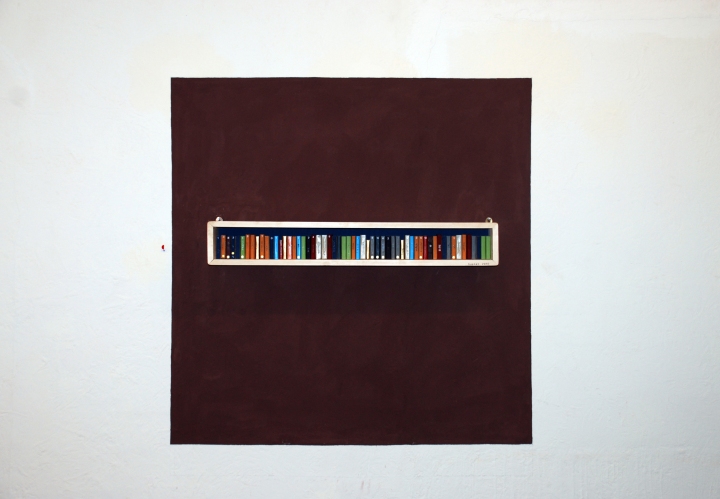
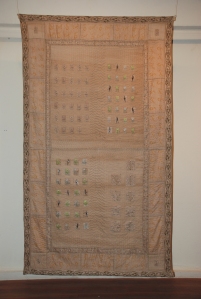

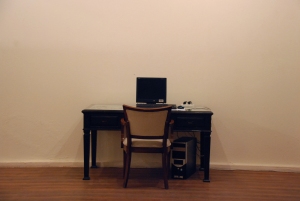
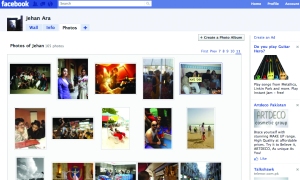
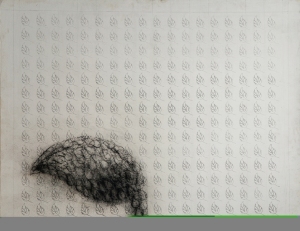



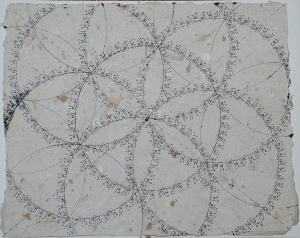
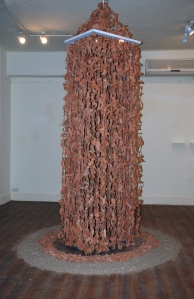










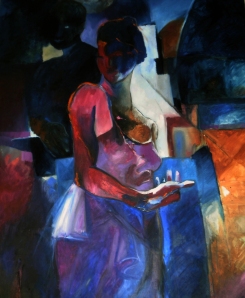









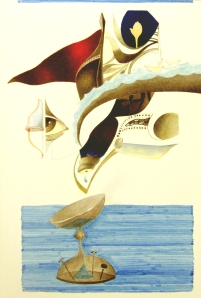

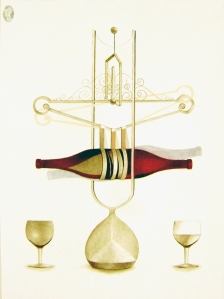


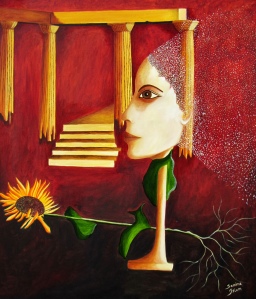

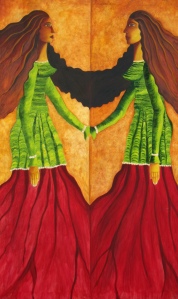

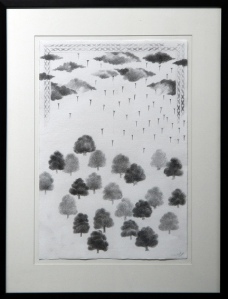









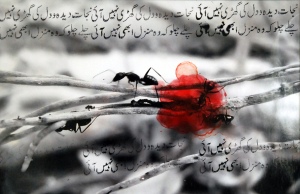


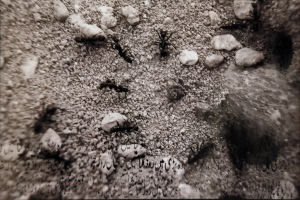


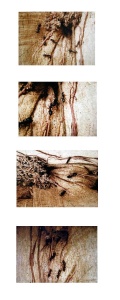

2 comments